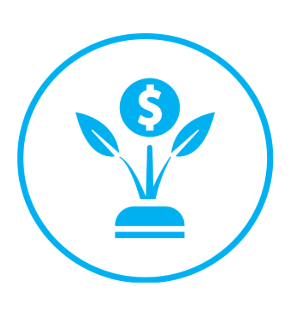Federal Budget 2025–26: What You Need to Know
From tax cuts to healthcare improvements and housing support, here are the key announcements that may impact you.
The Federal Budget for 2025–26 has landed, bringing a range of initiatives aimed at easing the cost of living, increasing access to healthcare, supporting education and construction, and strengthening the economy during uncertain times. Here’s a breakdown of the most relevant announcements and what they could mean for you.
Download full report here: Federal Budget Summary 2025-26
🔹 Tax Cuts: More Money in Your Pocket
From 1 July 2026, personal income tax rates for earnings between $18,201 and $45,000 will reduce by 1%, and again by another 1% in 2027.
Combined with previous rounds of tax cuts, this could save taxpayers:
Up to $2,229 in 2026–27
Up to $2,548 in 2027–28
That’s around $50 a week back in your pocket.
🔹 Medicare Levy Threshold Increases
From 1 July 2024, the Medicare levy low-income thresholds will be raised, meaning more low-income earners, families, and pensioners will pay less or no Medicare levy—a welcome support during rising cost-of-living pressures.
🔹 Energy Bill Relief Extended
From 1 July 2025, eligible households will receive an additional $150 in energy bill support, delivered quarterly in the second half of the year.
Small businesses will also benefit from energy efficiency grants and ongoing energy bill assistance.
🔹 Healthcare: More Rebates, Less Out-of-Pocket Costs
GP visit rebates are increasing significantly from 1 November 2025 (up to $69.56 in metro areas, $86.91 in remote).
Bulk billing will be expanded for more Australians.
PBS co-payments for medicines will drop from $31.60 to $25 from 1 January 2026.
50 more Medicare Urgent Care Clinics will be added to improve affordable, accessible care.
🔹 Women’s Health & Support Initiatives
150% Medicare rebate increase for IUD services
New Medicare rebates for menopause assessments
Cheaper access to contraceptives and UTI treatments
Wage increases for workers in aged care and early childhood education
$21.4 million to support domestic violence prevention and response
🔹 Education & Student Debt Relief
20% reduction in HELP/student loan balances from 1 June 2025
Repayment threshold lifted to $67,000, easing pressure on early-career earners
Around 3 million Australians expected to benefit
🔹 Childcare Becomes More Accessible
From 5 January 2026, most families will receive 3 days per fortnight of subsidised childcare, supporting greater workforce participation and easing financial pressure.
🔹 Housing & Construction Boosts
Help to Buy Scheme expanded to include existing homes
Gov’t equity contribution: 30% (existing homes), 40% (new homes)
Income caps raised to $100,000 (singles) and $160,000 (couples)
New tradie incentives of up to $10,000 for eligible apprentices
Employers may receive up to $5,000 hiring incentives for priority roles
🔹 Disaster Relief
For those impacted by Cyclone Alfred, income relief and lump-sum disaster recovery payments are available. Eligibility is based on residency, income loss, and location.
🔹 Support for Small Business
Extended energy bill relief and upgrade grants
Freeze on draught beer excise for hospitality and alcohol producers
Strengthened protections under the Franchising Code and unfair contract terms laws
🔹 Superannuation: No Changes Announced
The Budget did not introduce any new super measures, nor did it change the scheduled increase to the Super Guarantee, which will rise to 12% on 1 July 2025.
🔹 Employment Law Reform
A major change is coming in 2027:
Non-compete clauses will be banned for employees earning under $175,000, allowing more flexibility and mobility in the workforce.
Final Thoughts
While many of the Budget’s measures still need to pass through Parliament, the key themes are clear—cost-of-living relief, healthcare access, support for women and families, and a steady push for housing and workforce development.













